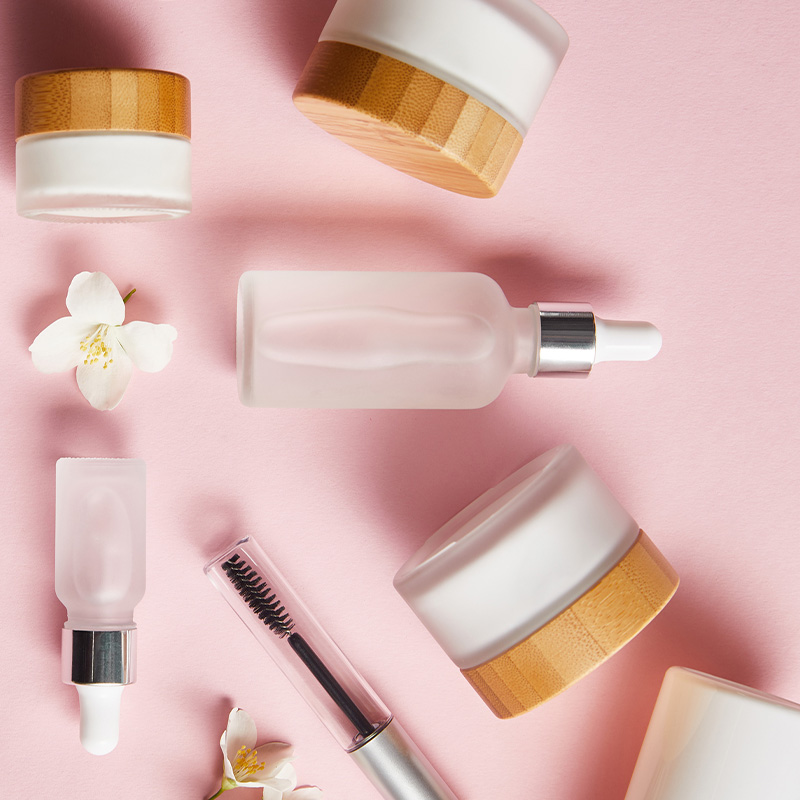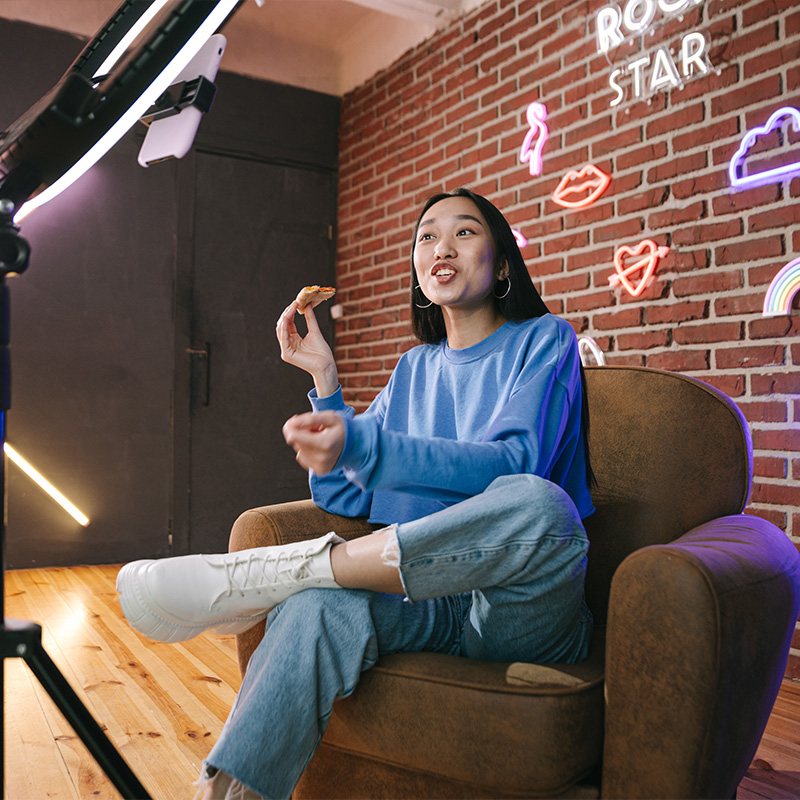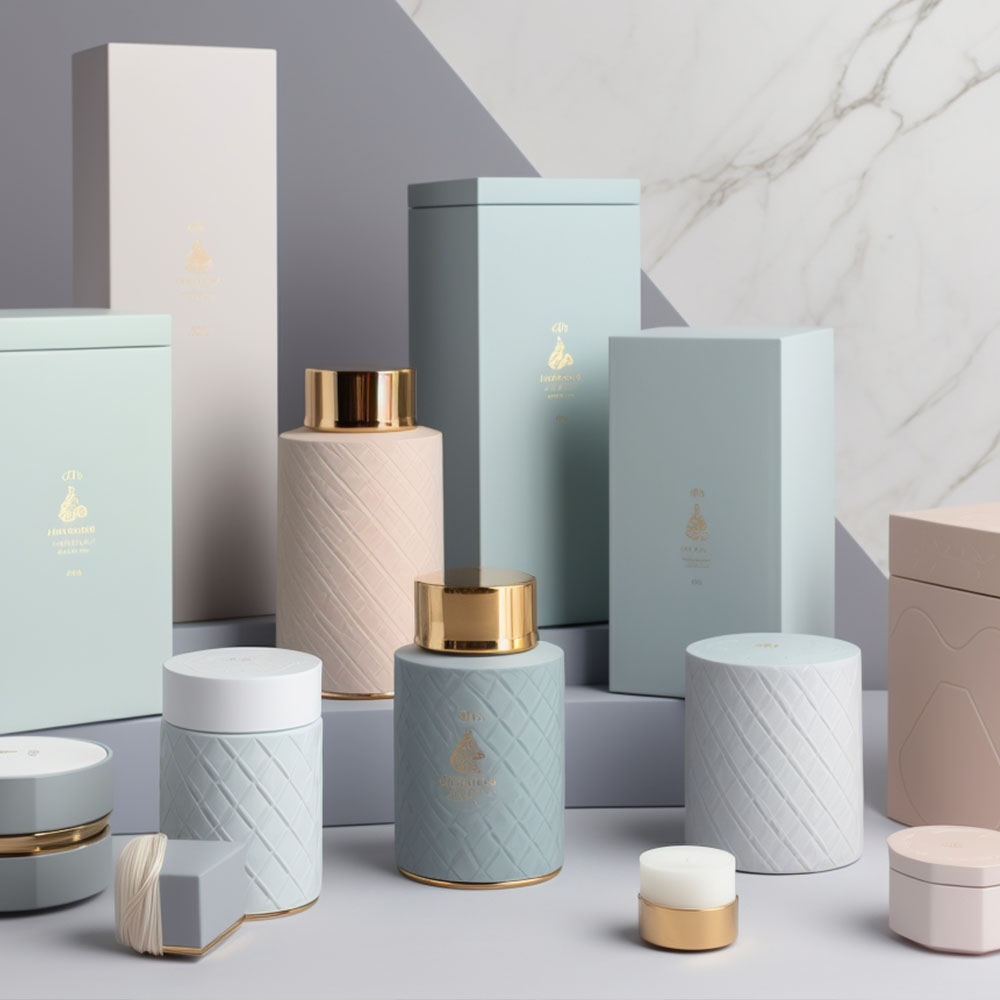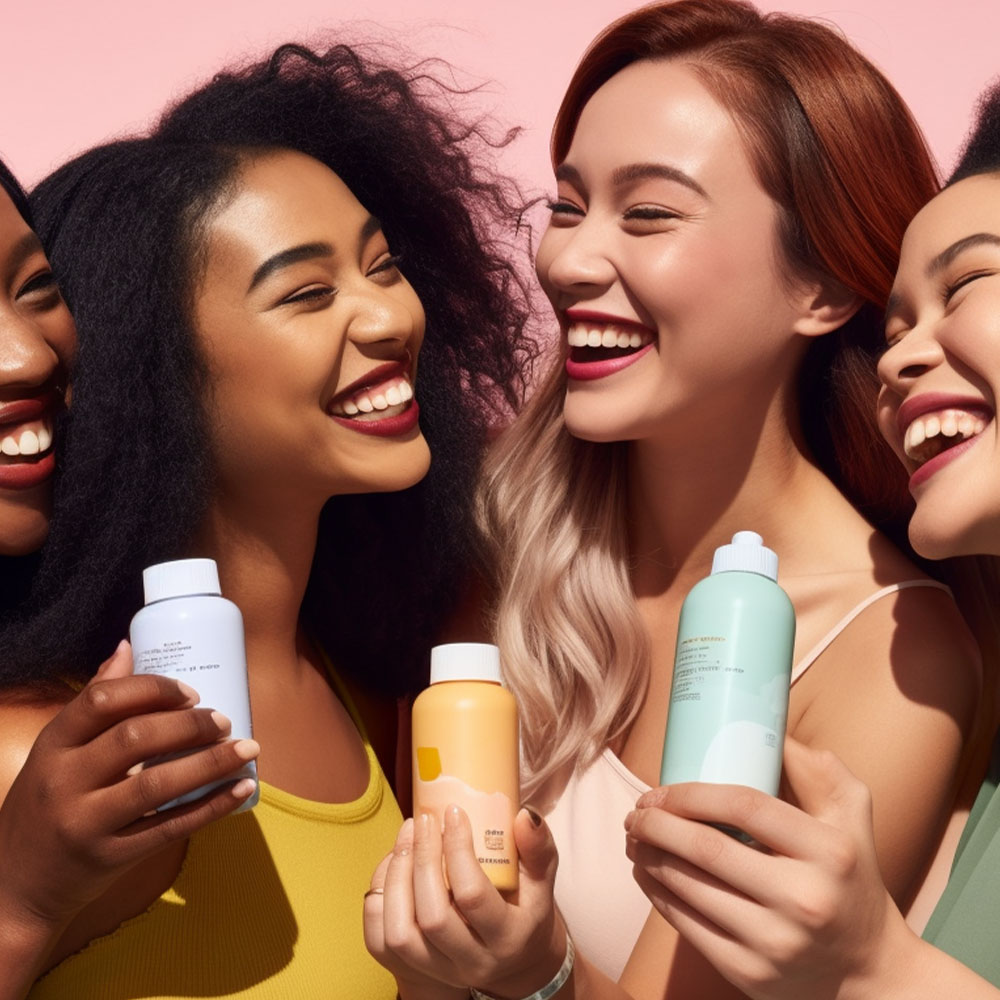
Are you a beauty brand struggling to reach your target audience? Have traditional marketing methods failed to deliver the results you desire? Fear not; influencer marketing is here to save the day. In an age where social media dominates our lives, consumers are likelier to trust influencer endorsements over brand advertisements. This is why influencer marketing has become a game-changer in the beauty industry.
In this comprehensive guide, we will explore the power of influencer marketing for beauty brands and how it can help you increase brand awareness, drive engagement, and ultimately boost sales. From identifying the right influencers to creating effective campaigns, we’ll cover everything you need to know about leveraging the influence of others to achieve success in today’s competitive market. So buckle up and prepare for an exciting journey into influential beauty branding!
Understanding The Basics Of Influencer Marketing
In beauty brands, influencer marketing has become a powerful tool to reach target audiences. But before diving into this strategy, it is essential to understand its basics. Influencer marketing involves partnering with individuals who have a solid social media following and whose opinions are highly valued by their followers.
One key benefit of influencer marketing for beauty brands is increased brand awareness. By partnering with influencers who align with your brand’s values, you can introduce your products to new audiences that may not have previously been aware of them. Additionally, influencers often have loyal followers who trust their recommendations, which can lead to increased sales.
However, there are also risks associated with influencer marketing. One risk is that influencers may post content that could be damaging to your brand’s reputation if not properly vetted beforehand. Another risk is a potential financial loss if an influencer fails to deliver on their end of the partnership agreement.
Targeting strategies must be carefully crafted to use influencer marketing for your beauty brand effectively. This includes identifying the right influencers based on factors such as audience demographics and interests and determining the most effective types of content (e.g., tutorials, and product reviews) for each partner.
Understanding the benefits and risks of using influencer marketing for beauty brands is crucial before embarking on any campaigns. However, with proper targeting strategies and careful consideration of potential risks, businesses can leverage this powerful tool to increase brand awareness and drive sales without sacrificing reputational damage or financial loss.
Identifying The Right Influencers For Your Brand
Now that you understand the basics of influencer marketing, it’s time to take the next step and identify the right influencers for your beauty brand. This is where finding niche influencers comes into play – those who align with your brand values and speak directly to your target audience.
When searching for niche influencers, consider their engagement rate one of the most critical factors. Engagement shows how actively an influencer’s followers interact with their content, reflecting on how valuable their partnership can be for your brand. Look at metrics like comments, likes, shares, or views across various social media platforms before choosing an influencer to collaborate with.
It’s also essential to evaluate the type of content that an influencer creates. Does their aesthetic match yours? Are they promoting products similar to yours? Analyzing this will help ensure that any collaboration feels authentic and genuine.
Finding the perfect fit between your brand and an influencer requires careful research and consideration. Before deciding, consider all relevant information, such as engagement rates, content creation style, and alignment with brand values.
By identifying the right influencers for your beauty brand through thoughtful selection criteria evaluation, you’ll be able to create meaningful partnerships resulting in increased exposure amongst targeted audiences while remaining true to your own unique branding identity.
Building Relationships With Influencers
Collaborative content is the key to successful influencer marketing. The relationship between beauty brands and influencers should be authentic and built on mutual trust and respect. Brands must identify relevant influencers who align with their values and goals while resonating with their target audience. This approach helps in creating an organic connection that will increase engagement levels.
Establishing a rapport with the influencer is essential before diving into collaboration. Authentic partnerships are born out of friendships, so brands must get to better know the influencers they want to work with. By doing this, both parties can brainstorm ideas together and develop unique campaigns that effectively utilize each other’s strengths.
Once you’ve identified relevant influencers and created strong relationships based on authenticity, it’s time to collaborate on content creation. Focus on developing high-quality creative concepts that resonate with your shared audiences; these need not always revolve around product promotions or sales-based messaging. For instance, consider tutorials showcasing how to apply makeup using your products or educational videos discussing skincare routines.
Finally, remember that building relationships takes time and effort but pays off in the long run by driving brand awareness and increasing conversion rates. Continue nurturing those connections beyond individual collaborations because you never know when another opportunity will present- loyalty breeds loyalty!
Crafting Effective Campaigns
Crafting Effective Campaigns:
Beauty brands can leverage the power of influencer marketing by creating compelling content that resonates with their target audience. To stand out in a crowded market, it’s essential to identify and collaborate with influencers who have a strong following within your niche. This allows you to tap into an engaged community of potential customers while building brand awareness.
When crafting campaigns for beauty products, focusing on what makes your brand unique is essential. Whether it’s eco-friendly packaging or cruelty-free formulas, highlighting these aspects will help differentiate your product from others in the marketplace. In addition, by working closely with influencers who align with your values and mission, you can create authentic messaging that connects with consumers.
To ensure maximum impact, use data-driven insights to guide your campaign strategy. This could mean analyzing engagement rates across social media platforms or conducting surveys to understand consumer preferences better. Then, with this information, tailor your messaging and visuals to resonate deeply with your target audience.
Ultimately, successful influencer marketing campaigns depend on collaboration between brands and creators. By leveraging each other’s strengths – combining creative vision with expert industry knowledge – brands can develop innovative campaigns that drive sales and build long-term relationships with loyal fans.
Remember: when targeting niche audiences through influencer marketing, authenticity is critical. Be transparent about your goals and collaborate with influencers to create natural and engaging content for them and their followers. With careful planning and execution, you can harness the power of influencer marketing to establish yourself as a beauty industry leader without compromising creativity or integrity.
Leveraging Social Media Platforms
Social media strategies have become a crucial element in the success of influencer marketing for beauty brands. With billions of people using social media daily, it’s an ideal platform to reach out to potential customers and engage with them. In addition, brands can use platforms like Instagram, Facebook, YouTube, and Twitter to showcase their products through influencers.
However, creating a social media strategy that resonates with your audience requires careful planning. Beauty brands must understand their target audience and what kind of content they respond to best. This knowledge helps craft messages that create engagement and resonate with consumers’ needs.
One way beauty brands can increase audience engagement on social media is by partnering with micro-influencers. These individuals may not have millions of followers but possess a significant following within a niche market. Micro-influencers allow beauty brands to tap into specific communities that align closely with the brand’s values and goals.
Another effective social media strategy for beauty brands is leveraging user-generated content (UGC). UGC refers to any form of content created by users or fans about a product or service offered by a brand. Using UGC increases authenticity and trust from potential buyers by showing how others use the product in real-life situations.
By implementing these social media strategies correctly, beauty brands stand to gain more visibility, increased sales opportunities, and deeper connections between themselves and their audiences. In addition, influencer marketing has continued to evolve; hence staying updated on new trends will be essential in maintaining relevance online while keeping up with consumer demand for innovative solutions.
Measuring The Success Of Your Campaigns
Measuring the success of your influencer marketing campaigns is crucial to ensuring that you are getting the most out of your investment. The critical metrics for social media campaigns include reach, engagement, and conversions. Reach measures how many people have seen your content, while engagement tracks how much interaction it receives.
Social media metrics such as likes, comments, shares, and clicks can give you a good idea of your campaign’s performance. However, don’t just rely on these figures alone – they should be viewed in context with other data, such as website traffic or sales numbers. You can determine which channels resonate most with your target market by measuring audience engagement levels across different platforms.
Another essential factor to consider when assessing the success of an influencer marketing campaign is whether it has generated any tangible results. For example, have there been increases in brand awareness or customer loyalty? Are you seeing more traffic to your website or increased sales? If so, then chances are that your campaign was successful.
In conclusion, measuring the effectiveness of influencer marketing campaigns requires careful attention to detail and analysis of multiple factors. Social media metrics provide valuable insights into audience engagement levels but must be considered alongside other data points, such as website traffic and sales numbers. Ultimately, achieving measurable results will help ensure that your investments in beauty brands’ influencer marketing continue to drive real business value.
Avoiding Common Mistakes
Regarding influencer marketing, it’s essential to be aware of the common pitfalls. For example, one of beauty brands’ most significant mistakes is not identifying fraudulent influencers. Additionally, it’s essential to have an effective negotiation strategy when working with influencers on fees. To avoid costly mistakes, brands should always thoroughly research potential influencers and have clear guidelines in place for negotiations.
Identifying Fraudulent Influencers
As the popularity of influencer marketing for beauty brands continues to grow, spotting fake influencers and dealing with influencer fraud have become crucial. Unfortunately, many businesses fall victim to fraudulent influencers who offer little or no return on investment. Learning how to identify these individuals is essential to avoid this common mistake.
One way to spot fake influencers is by examining their engagement rates. A high number of followers does not necessarily mean an influencer has real influence over their audience. Some accounts may have bought followers or artificially used bots to increase their numbers. Monitor consistent engagement rates across all posts and verify suspicious activity through third-party tools such as Social Blade.
Another red flag is when an influencer’s content appears too good to be true. For example, fake influencers often rely on stock photos or images from other sources instead of creating original content. It’s also worth checking if their captions match the tone of voice in previous posts – inconsistencies could indicate that they are being paid to promote products rather than genuinely endorsing them.
Finally, make sure you do your due diligence before working with an influencer by researching their background thoroughly. Check whether they have worked with similar companies before and ask for references from past clients. If something seems off about an influencer, trust your instincts and don’t engage them in promoting your brand.
In conclusion, identifying fraudulent influencers should be a top priority for any business looking to succeed in beauty brand marketing. By following these tips and remaining vigilant at all times, you can protect yourself from potential scams while effectively leveraging social media personalities’ power. Remember: authenticity always wins out in the end!
Working With Influencers On Fee Negotiations
Now that we’ve covered how to spot fraudulent influencers let’s move on to another common mistake: negotiating influencer compensation. Many businesses struggle with this aspect of working with influencers, as it can be challenging to determine a fair rate for their services. However, negotiation tactics are crucial when it comes to compensating influencers properly.
Firstly, remember that the size of an influencer’s following does not always equate to higher compensation rates. Instead, focus on metrics such as engagement and conversion rates when deciding on a fee. For example, suppose an influencer has a smaller following but high engagement and conversions. In that case, they may be more valuable than someone with a larger audience who also doesn’t convert.
Secondly, don’t be afraid to negotiate with influencers. While some may have set rates or packages available, others may be open to discussing different options based on your needs and budget. Be clear about your goals and expectations from the outset so that both parties can come to a mutually beneficial agreement.
Thirdly, consider offering incentives in addition to monetary compensation. For example, you could offer free products or exclusive access to events or content that aligns with the influencer’s interests and values. This can help build stronger relationships between your brand and the influencer while providing them additional value beyond just financial gain.
In conclusion, negotiating influencer compensation requires careful consideration and strategic thinking. By focusing on relevant metrics, being open to discussion, and offering incentives where appropriate, you can create successful partnerships with influencers that benefit your business and theirs without overpaying or undervaluing their contributions. Remember: finding ways to innovate in this area can lead to long-term success for your beauty brand marketing efforts!
Maximizing Your Return On Investment
While avoiding common mistakes is crucial, maximizing your return on investment (ROI) when implementing influencer marketing for beauty brands is equally essential. After all, the ultimate goal of any marketing campaign is to drive sales and increase revenue. Calculating ROI helps you determine whether your efforts are paying off or not.
One way to maximize your ROI is by targeting micro-influencers instead of macro-influencers with huge followings. Micro-influencers may have a smaller audience but often have highly engaged followers who trust their recommendations. Plus, working with micro-influencers usually costs less than collaborating with macro-influencers.
Another strategy to boost your ROI is setting clear goals and metrics before launching an influencer marketing campaign. Determine what success looks like for your brand – whether it’s increasing website traffic, generating more leads, or driving sales – and track those metrics throughout the campaign. This will help you measure the effectiveness of your efforts and make adjustments as needed.
Finally, don’t underestimate the importance of building solid relationships with your chosen influencers. Collaboration should feel authentic and mutually beneficial for both parties involved. A successful partnership can lead to long-term brand loyalty and continued growth in sales and revenue.
By following these tips for maximizing your ROI through influencer marketing, beauty brands can see significant returns on their investments while growing their online presence and reaching new customers. So go ahead, and take that leap into innovative strategies that can revolutionize how you approach marketing!
Staying Ahead Of Industry Trends
Exploring Innovation is crucial for staying ahead of industry trends in the beauty market. With new technology and social media platforms emerging constantly, keeping up with the latest developments is essential. One way to stay on top is by attending conferences and events that provide insight into what’s happening in the industry.
Industry Forecasting can also help you anticipate upcoming trends before they become mainstream. By analyzing data and monitoring consumer behavior, you can identify patterns that will enable you to make informed decisions about your influencer marketing strategy. Stay updated through reports from reputable sources, such as trade publications or industry associations.
Incorporating New Technologies into your influencer marketing tactics can give you an edge over competitors who are slow to adapt. From virtual try-ons to AI-powered skincare analysis tools, there are many ways to leverage technology when partnering with influencers. Don’t be afraid to experiment with cutting-edge techniques that allow consumers to interact with your brand innovatively.
Collaboration with Influencers known for their forward-thinking approach can also help position your brand as a leader in Innovation. Seek creators at the forefront of emerging trends whose content resonates with your target audience. When working together, encourage them to explore new concepts and share ideas that push boundaries – this helps build a stronger partnership and generates fresh perspectives on how influencer marketing can drive growth for your business.
By keeping up with Emerging Trends, Leveraging Industry Forecasting Data, Integrating New Technologies, and Collaborating with Forward-Thinking Influencers, brands can foster an environment of constant Innovation within their influencer marketing strategies. As a result, they’ll be better equipped to meet changing consumer preferences while maintaining relevance among competitors in the ever-evolving beauty landscape.
Case Studies: Successful Influencer Marketing Campaigns In The Beauty Industry
Influencer marketing has transformed the beauty industry, and it’s no surprise why. Engagement rates have skyrocketed for brands that utilize social media influencers to promote their products. One of the most successful campaigns was a collaboration between Glossier and Emily Weiss. She utilized her large following on Instagram to promote the brand, increasing brand visibility and sales.
Another successful campaign example is when Estée Lauder partnered with Kendall Jenner. The model used her platform to showcase new product launches and give honest reviews, which resonated well with her followers. This partnership resulted in increased engagement rates for both parties involved.
Influencer selection plays a crucial role in the success of any campaign. Brands must choose influencers who align with their values, audience demographics, and aesthetics. A great example is Fenty Beauty’s partnership with Jackie Aina, a popular YouTuber promoting inclusivity within the beauty community. Her content strategy aligned perfectly with Fenty Beauty’s mission statement.
Content strategy is equally important for achieving success through influencer marketing campaigns. Take Huda Kattan’s collaboration with Sephora as an example; she created tutorials using only Sephora products to introduce them to her following while providing helpful tips and tricks. This increased engagement rates and aided in establishing trust between consumers and the brand.
By utilizing these tactics and taking inspiration from successful case studies, beauty brands can effectively leverage influencer marketing to drive sales, increase brand visibility, and establish themselves as authorities within their respective markets without sacrificing authenticity or integrity.
Conclusion
In conclusion, influencer marketing has become vital to the beauty industry. By understanding the basics and identifying suitable influencers for your brand, you can build relationships that lead to successful campaigns with maximum return on investment.
Remember to leverage social media platforms where your target audience is most active while avoiding common mistakes such as partnering with influencers who don’t align with your brand’s values or failing to disclose sponsored content adequately. Stay ahead of industry trends and be open to new ideas to ensure your campaigns remain fresh and compelling.
As a content writer/strategist for influencer marketing in beauty brands, I urge you to embrace the power of this strategy and incorporate it into your overall marketing plan. After all, as the saying goes: “A picture is worth a thousand words,” partnering with influential voices in the beauty space can speak volumes about your brand’s credibility and reach.
Start your influencer marketing with us. Click here.









